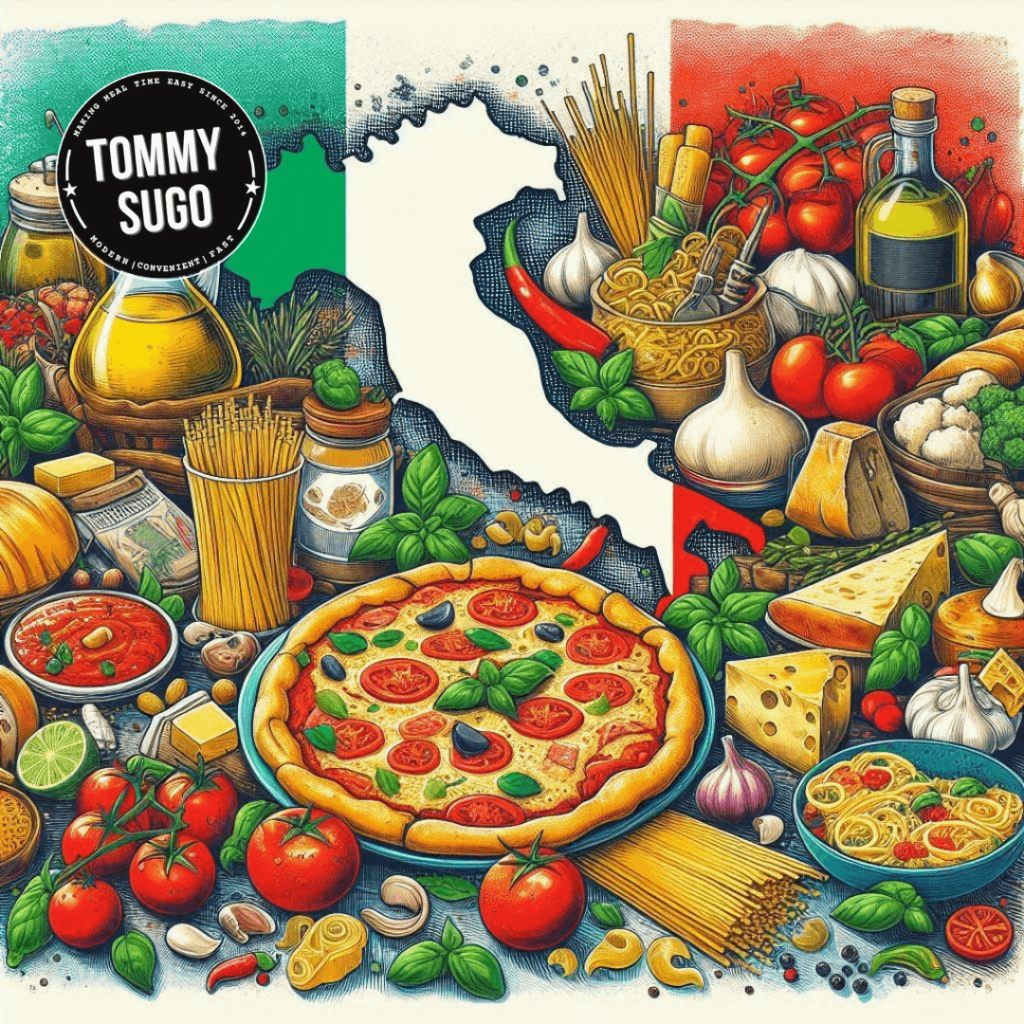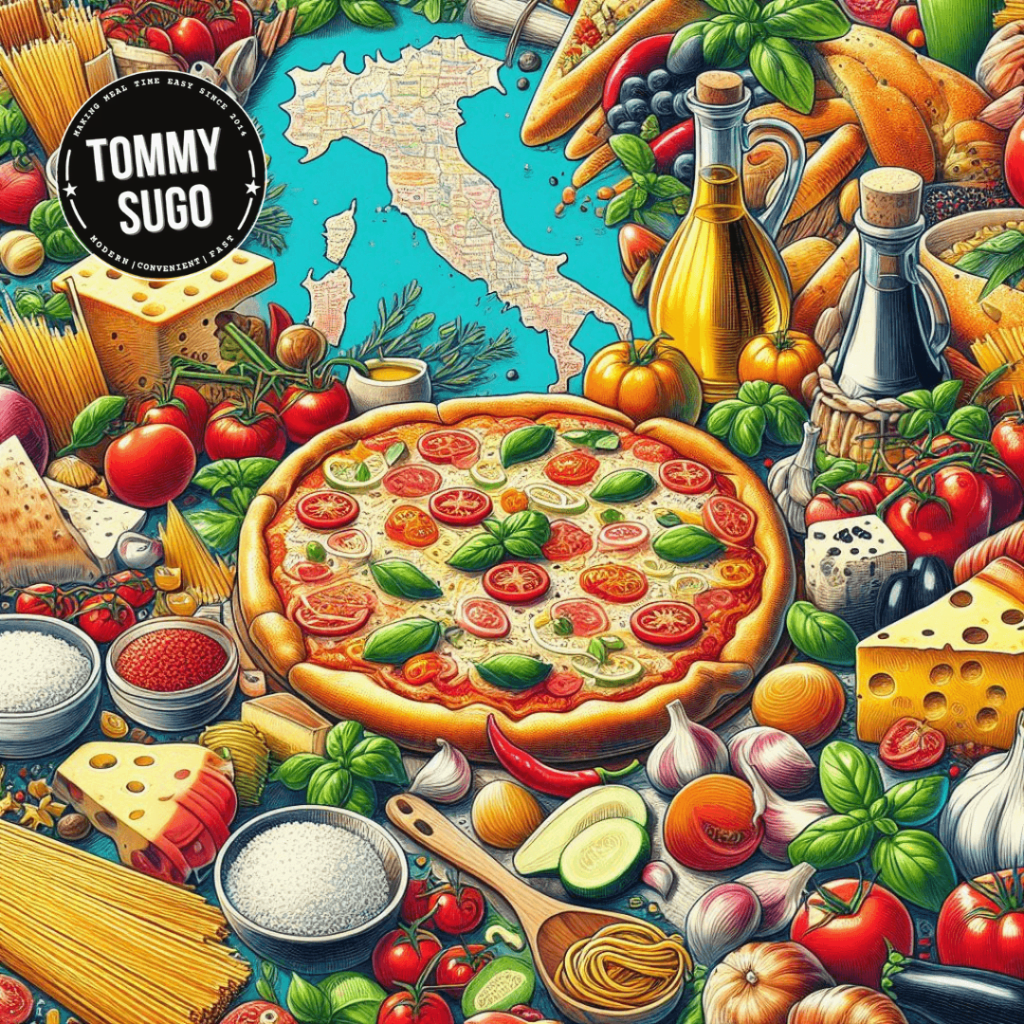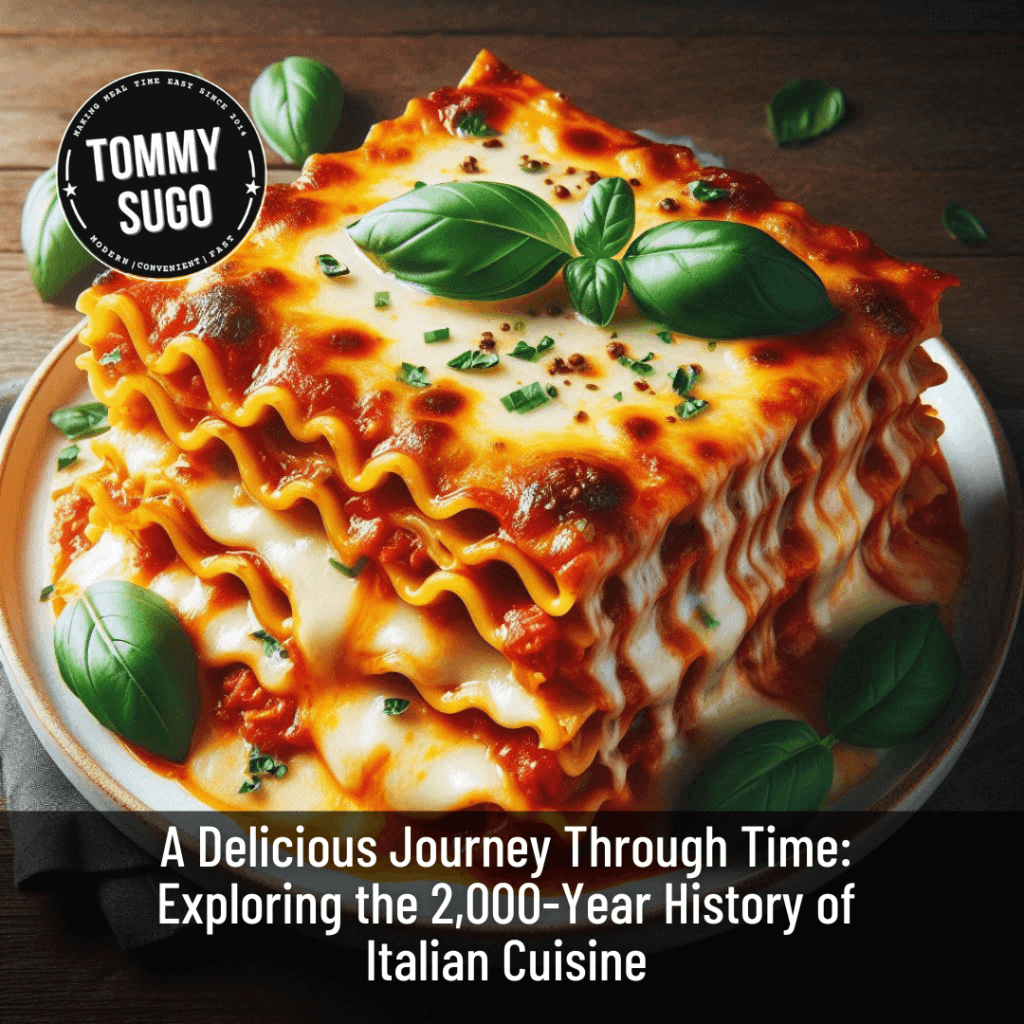Have you ever wondered how that plate of steaming pasta or that slice of cheesy pizza became synonymous with Italian cuisine? The answer, Perthlings, lies in a rich and fascinating history stretching over 2,000 years! Buckle up for a delicious journey through time as we explore the evolution of Italian food from its humble beginnings to the global phenomenon it is today.
Critical Takeaways:
- Uncover the surprising influences on Italian cuisine throughout history.
- Discover how regional variations emerged, shaping the food we know today.
- See how Italian food went from simple peasant fare to a celebrated global cuisine.
At Tommy Sugo, we’re passionate about bringing you authentic Italian flavours. But understanding the history behind these flavours adds a new layer of appreciation to every bite. So, grab a fork (or maybe a slice of fresh bread!), and let’s delve into the delectable world of Italian cuisine’s history!
History of Italian Cuisine: The Early Days of Italian Food
Roman banquet
The story of Italian cuisine begins around the 4th century BC, with the Etruscans and Greeks laying the groundwork for what would become some of Italy’s most recognizable staples. Think wheat, barley, and olives—the foundation for many classic dishes. Fast-forward to the rise of the Roman Empire, and things get a whole lot more extravagant.
Roman Feasts: A Celebration of Conquest and Cuisine
With their vast empire, the Romans were exposed to a diverse range of ingredients and culinary techniques. This led to a more elaborate cooking style featuring imported spices, seafood, and plenty of wine. Think elaborate banquets with roasted meats, fish sauces, and early versions of pasta made with spelt flour.
Did you know? While some may picture Romans solely indulging in lavish feasts, their everyday meals were likely much more straightforward. Think peasant fare like porridge, bread dipped in olive oil and seasonal vegetables.
The Middle Ages: A Time of Change and Regionalization
Medieval Italian marketplace
The fall of the Roman Empire marked a significant shift in the history of Italian cuisine. Trade routes were disrupted, leading to a reliance on local ingredients. This, in turn, fostered the development of regional variations.
The Rise of Regional Specialties
With its access to butter and dairy, Northern Italy saw the rise of creamy risottos and cheese-filled pastas. With its fertile plains, Central Italy became known for hearty wheat dishes and meat-based sauces. And in the south, where olive oil reigned supreme, lighter and more vegetable-focused dishes took centre stage.
A Personal Touch: During this period, tomatoes brought from the Americas began to slowly make their way into Italian cooking. While initially met with suspicion, they eventually became a cornerstone of many beloved dishes.

Renaissance Feasts and the Birth of the Cookbook
Renaissance Italian kitchen
The Italian Renaissance brought a renewed interest in art, culture, and, yes, food! Lavish banquets once again became a symbol of power and wealth. This period also saw the birth of the first cookbooks, documenting recipes and techniques for future generations.
The Power of the Cookbook
One of the most famous cookbooks of this era was “De arte Coquinaria” by Bartolomeo Sacchi, also known as Platina. Published in 1474, it compiled recipes from across Italy and beyond, helping to further solidify regional culinary traditions.
Interesting Fact: Many of the ingredients and techniques in Platina’s cookbook are still used in Italian cooking today. This serves as a testament to the enduring legacy of Renaissance cuisine.

From the Medici to the Modern Table: The Continued Evolution of Italian Food
Modern Italian restaurant
The centuries following the Renaissance saw Italian cuisine continue to evolve. Trade routes reopened, bringing new influences from Asia and the Americas. The Medici family, prominent patrons of the arts, also significantly promoted Italian food culture on a global scale.
Italian Food Goes Global
The 18th and 19th centuries saw a rise in Italian immigration, particularly to the United States. This led to the introduction of Italian cuisine to a broader audience. Pizza, initially a street food in Naples, gained international popularity. Pasta dishes like spaghetti and lasagna became staples in kitchens around the world.
A Touch of Tommy Sugo: While some of these “Italian-American” dishes may not be exactly what you’d find in Italy, they represent the adaptability and evolution of Italian cuisine in a global context.

The Future of Italian Food: Tradition Meets Innovation
Italian cuisine thrives today, balancing its rich history with modern innovation. Chefs and home cooks are exploring new flavour combinations, using fresh, seasonal ingredients, and pushing the boundaries of traditional recipes.
The Slow Food Movement and a Return to Tradition
In recent decades, there has been a growing appreciation for the slow food movement, emphasising the importance of using high-quality, locally sourced ingredients and traditional cooking methods. This movement has helped to preserve many regional Italian dishes that were in danger of being forgotten.
Italian Food in the 21st Century: A Global Phenomenon
Italian cuisine is now a global phenomenon, with restaurants serving authentic Italian food popping up in cities worldwide. However, it’s important to remember the rich history and cultural heritage behind these dishes.
A Personal Note: At Tommy Sugo, we’re proud to be part of this ongoing Italian food store. Understanding the history of Italian cuisine allows us to appreciate better the flavours and traditions that have shaped it.

Also, see 10 Scrumptious Italian Foods You MUST Try in Perth (Delivered Straight to Your Door!)
From Ancient Rome to Your Dinner Table: A Culinary Journey
The history of Italian cuisine is a fascinating tapestry woven with threads of tradition, innovation, and cultural exchange. From the simple flavours of ancient Rome to the sophisticated dishes of today, Italian food continues to captivate and inspire.
By understanding the rich history behind your favourite Italian dishes, you can gain a deeper appreciation for the culinary artistry that goes into each plate. So, the next time you savour a bowl of pasta or a slice of pizza, take a moment to reflect on the centuries of history that have shaped this beloved cuisine.
Ready to embark on your Italian food adventure? Tommy Sugo offers a range of authentic Italian dishes crafted with the utmost care and respect for tradition. Let us transport you on a culinary journey through time, one delicious bite at a time.
Order Now: Tommy Sugo
FAQs
Q: What are some of the oldest Italian dishes still enjoyed today?
A: Some of the oldest Italian dishes that are still popular today include pasta dishes like gnocchi and lasagna, bread, and olive oil. These staples have been enjoyed for centuries and continue to be enjoyed by people worldwide.
Q: How did the Roman Empire influence Italian cuisine?
A: The Roman Empire significantly impacted Italian cuisine, introducing new ingredients and cooking techniques. Their love of feasts and banquets also shaped how Italians approach food and dining.
Q: What role did the Medici family play in the history of Italian food?
A: The Medici family, powerful patrons of the arts, also played a crucial role in promoting Italian food culture. Their influence helped to elevate Italian cuisine to new heights and spread its reputation throughout Europe.
Q: How has Italian cuisine evolved in recent years?
A: Italian cuisine has continued to evolve in recent years, with chefs and home cooks exploring new flavour combinations and ingredients. The slow food movement has also helped to preserve traditional dishes and promote sustainable food practices.
Q: What makes Italian cuisine so popular around the world?
A: Italian cuisine is famous worldwide due to its emphasis on fresh, high-quality ingredients, diverse regional flavors, and ability to be both simple and sophisticated. It is also enjoyed by people of all ages and cultures.
Q: How can I learn more about the history of Italian cuisine?
A: Many resources, including cookbooks, documentaries, and online articles, are available to learn more about the history of Italian cuisine. You can also visit Italy and experience the cuisine firsthand.
Conclusion
The history of Italian cuisine is a fascinating story of evolution, adaptation, and cultural exchange. From ancient Rome to the modern day, Italian food has continued to captivate and inspire people worldwide. By understanding the rich history behind your favourite dishes, you can gain a deeper appreciation for this beloved cuisine.
So, the next time you enjoy a delicious Italian meal, take a moment to reflect on the centuries of tradition and innovation that have shaped it. And remember, Tommy Sugo is here to bring the flavours of Italy to your doorstep.





